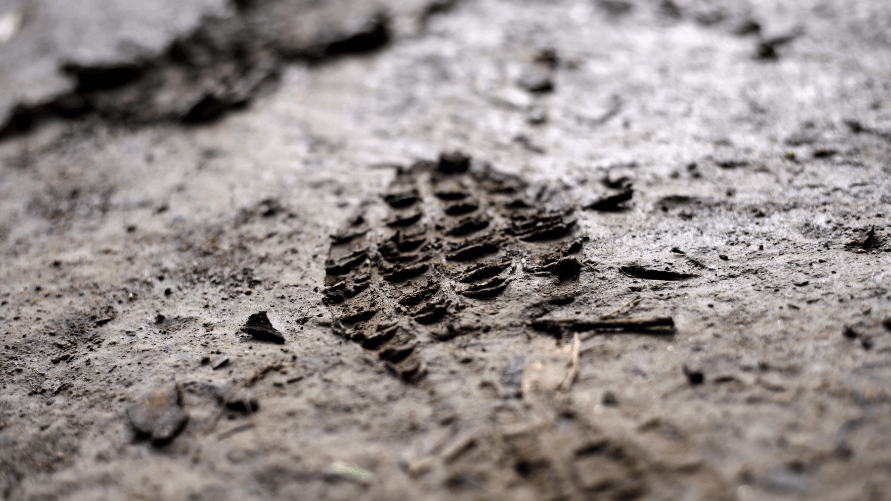TLDR: Brace yourself for a wild ride as I dive into a thrilling graveyard meditation adventure. From serene sunset surroundings to nerve-wracking encounters, follow my rollercoaster journey as I explore fear, arming myself with the Three Jewels while battling the terror with breath meditation and metta.
A while back, I impulsively signed up for a cemetery meditation session with Palelai Buddhist Temple, promptly forgetting about it until just a week before the event. With no preconceived expectations, I approached the experience with a carefree mindset, blissfully unaware that it would be a departure from the usual temple retreat.
Mindfulness of death (maranasati) is one of the many meditation methods that we can practise when we sit. It is an awareness exercise to contemplate deeply about death and the impermanence of this body. Its purpose is to serve as a reminder that death can strike us at any moment, developing a sense of spiritual urgency so that we would practise with diligence.
Rightly practised, maranasati drives us to recognise the reality of the body and that it is of the nature to decay, providing us insight into the nature of existence.
Expectations…or not
As the date approached, a sense of excitement began to build. This was no ordinary meditation; it was a venture into the serene realms of Bukit Brown Cemetery.
With the anticipation rising, I started making a mental checklist of items to ensure maximum comfort – because let’s face it, who wants to deal with mosquitoes during a spiritual journey?
True to form, I found myself fashionably late for the briefing at Palelai, hastily scribbling my signature on the indemnity form before dashing for the transport bus.
As I shamefully took the last spot in line, I settled into my seat and peered out at the city’s iconic Singapore’s Flyer and MBS skyline, watching it blur pass as the bus sped towards our destination.
The drive into the woods
Upon our entry into Bukit Brown Cemetery, the bus navigated through tight and narrow paths, slowing down as we delved deeper into the forest. The sun was gracefully setting, casting a warm glow that painted the sky in hues of orange and pink.

Cr: The Travel Intern
Through the tall trees, the enchanting sunset peeked through, setting the stage for an evening of unique and deep introspection.
As I marvelled at the captivating canvas of colours stretching across the sky, my daydreaming was abruptly interrupted. Instructions echoed in my ears, “if you see anything, hear anything, smell anything, don’t react ah. Just go back to your usual meditation object ok” the volunteers urged us. Well-acquainted with anapanasati as my primary meditation object, the prospect of focusing on my breath seemed like a familiar journey.
The volunteers reassured us with the promise of three triumphant “sadhu” calls heralding the end of our two-hour meditation.
Venturing deeper into the woods under the guidance of the volunteers, we each received our own “individual tombstone” to set out our mats right in front of the tombstone and assumed our meditation postures.
Maintaining a respectful distance of at least two arm lengths (perhaps three for someone of my vertically challenged stature), I found myself positioned in the furthest reaches of the woods, I wasn’t sure whether to count myself lucky or the opposite.. :’)
The mental and physical preparation before the long sitting
Before departing, the volunteers reiterated the crucial instruction: “Hear, see, smell anything don’t react ok! Try not to open your eyes!” It suddenly dawned on me that this was no mere child’s play; my eagerness for a novel experience failed to prepare me for what lay ahead.
Was this about to be a friendly visitation from the resident friends, a thought that humorously crossed my mind?
Settling into the two-hour meditation session, an uncharted territory for someone accustomed to a maximum of 45-minute sits, I questioned my ability to endure this prolonged stillness.
Cross-legged and five minutes into the session, the uncle beside me made himself at home and comfortable by initiating a “ceremonial mosquito repellent ritual” by spraying his and my surroundings.
Shifting his position to face me instead of his designated tombstone, he playfully quipped, “Better to open my eyes to a human than a tombstone la, hor?” he joked. I chuckled, and we both assumed our individual meditation postures. Adjusting to the pervasive fragrance of insect repellent, generously applied by my fellow meditators, I took some time as we delved further into the sit, now approximately 15 minutes in.
..at this point I am aware that this sounds like an O-level English composition paper sia.
During the sit — disturbed peace.
Amidst the occasional insect crawls and bites, I choose to adopt a laissez-faire attitude, whispering to myself, “Juuust let it be; may they be well,” while sending metta to my tiny, buzzing companions. Settling into the unfamiliar environment proved challenging, aggravated by the “free perfume”—courtesy of the mosquito repellent—that filled the air.
As I sat there for another 10 minutes or so, my peace was abruptly s.h.a.t.t.e.r.e.d.

Suddenly, footsteps, unmistakably human, began to circulate the perimeter of my mat. From the right, behind me, to the left. The rhythmic pacing continued, devoid of any verbal interaction. Convinced that I wasn’t conjuring this in my imagination, and equally certain that no volunteer was wandering at this hour, my heart raced, and my mind spun narratives of the mysterious intruder.
My imagination wove enough tales to send shivers down my spine. Panic set in, tempting me to open my eyes and confront the unknown, but fear held me back.
I clamped my eyes shut, becoming as still as a skeleton; a skeleton buried in fear. The footsteps prolonged and intensified; I could swear they were on my mat! My heart was palpitating so rapidly I thought I felt it right in my mouth.
The stomping got more frequent and much louder.
Amid this nerve-shattering circumstance, I recalled the two-syllable mantra: “Bud-dho” as taught by the revered late Ajahn Chah. “Observe, don’t react” I desperately repeated in my mind. Channelling my focus back to my breath in between my upper lip and nostrils, I grappled with the mounting numbness in my legs.
The familiar urge to change posture arrived, as per my “biological clock” at the 35-minute mark, but fear paralysed me. I endured the discomfort, viewing it as an opportunity to push my mental and physical boundaries, contemplating the impermanence (anicca) of the sensation. I tried my best to observe the rise and fall of this phenomenon.

The deafening silence became almost unbearable, compounded by the chaotic narratives playing out in my mind about the bizarre stomping. I recalled Ajahn Brahm’s words, assuring that harm would not befall us as long as our moral conduct (sila) remained pure.
Yet, doubt crept in—was I truly leading a blameless life, worthy of the devas’ protection? Questioning my self-worth, I pondered whether I upheld the five precepts well enough. In that vulnerable moment, I found solace in the only certainty I could grasp: trust that I was okay.. I mean, what else could I do at that very moment? I was scared shitless.
In the course of my unnerving existential ordeal, a profound realisation dawned on me: if the Buddha had triumphed over challenges, then I, too, could navigate through this turbulent moment.
“What the Buddha overcame, we too can overcome. What the Buddha attained, I, too, can attain”; a phrase that I chanted frequently in reverence to the Three Jewels entered my mind. Desperate situations call for desperate measures.
In those moments of utter panic, my faith in the Buddha intensified, and I found solace in recollecting his sublime qualities (Buddha Vadana), as if invoking his divine presence would shield me from harm. If Buddha, the perfectly enlightened being, knower of the worlds, said I could do it, then I can.
Almost surrendering to a higher power (lol), I unabashedly entrusted my fate to the Buddha. The grip of fear had grown so potent that I willingly sought refuge in the Three Jewels, pondering what the Teacher of gods and men would advocate in such a predicament.
Embracing the practice of buddhanusati, a peculiar yet fascinating deviation from the intended maranasati session, I extended my focus to spreading metta. With each loving-kindness meditation, I directed metta to those I cherished, those who invoked neutrality, and even those I found myself frightened by at that very moment—whatever form they might take.
It was an act of admitting to the universal truth that, despite our diverse appearances (forms), we are all bound in the cyclical nature of birth and rebirth, tethered by ignorance.
Contemplating the interconnectedness of all sentient beings, seen or unseen, I found comfort in the shared struggle within samsara, the countless cycle of continuous existence. Reflecting on the Buddha’s teachings on metta, I acknowledged the universal pursuit of happiness, a shared aspiration that transcends the boundaries of form.
In that moment of terror, the realisation that we are all yearning for joy, regardless of our current forms, illuminated a path of empathy and understanding.
After all, who’s to say that in the next life, I won’t be reborn in a form similar to those I feared at that very moment?
In acknowledging our shared journey in dukkha through samsara, I discovered an intense sense of compassion that extended beyond the confines of my immediate experience.
The internal monologue persisted, stretching on for what felt like another 15 to 20 minutes, or perhaps even more—I couldn’t be certain, too petrified out of my wits to check the time. The mantra “Bud-dho” became my lifeline, a rhythm that echoed in my mind:
“Breathing in, I count 1. Breathing out, I count 1.
Breathing in, I count 2. Breathing out, I count 2.”
I repeated this sequence until the count of 5 before restarting the cycle. Gradually, my mind accepted this momentum of breathing in and out. In that unnerving silence, my sole companions were the rhythmic inhales and exhales—my breath, my best friend, my unwavering ally.
“Sadhu sadhu sadhu” signifying the end of meditation
With my eyes still tightly shut, a sudden beam of light penetrated the darkness. Simultaneously, footsteps approached my side, and a volunteer whispered, “Sadhu, sadhu, sadhu” in my ear. Alas! Relief washed over me; hope had arrived. As I slowly rose, my eyes finally opened, revealing the human faces of the volunteers.
The revelation

After sharing merits and engaging in post-meditation chatter, the uncle who had faced me during the session expressed his admiration for my ability to sit completely still for the entire two hours.
Feeling a mix of embarrassment and relief, I refrained from admitting that my motionlessness was fuelled by sheer fright. As he sat facing me instead of the tombstone, he recounted observing a rat scurrying around, as if “circumambulating” me throughout the meditation. Instantly, a sigh of relief escaped me, realising that my anxiety had been unwarranted.
Thinking back
That night, lying on my bed, I pondered the intriguing string of emotions during this unique experience. There were no supernatural entities on my meditation mat—just the tumultuous workings of my mind. It became clear that my ordeal was a testament to the potent influence of fear and the resilience discovered in surrendering to the simplicity of breath and the present moment.
Reflecting on the situation, I couldn’t help but feel a twinge of foolishness for concocting horror stories within my mind, wasting a good 30 minutes (or more!) in the process.
This experience served as a timely reminder of the impact of our mental constructions on perception. I undoubtedly fabricated unnecessary narratives, instilling fear within myself. Rather than noting the stomping footsteps with equanimity and continuing with my meditation, I allowed my mind to be engulfed in futile scenarios that sparked uneasiness.
In those moments of self-induced apprehension, the power of our cognitive processes became glaringly apparent.
There lies a fine line between understanding the nature of our thoughts and succumbing to the unnecessary panic that our minds can craft.
The entire encounter unfolded as a captivating rollercoaster of the mind. To my surprise, my smartwatch revealed that I had been in a state of sleep for 1 hour and 15 minutes out of the 2-hour meditation. Perhaps my heart wasn’t pounding as intensely as my vivid imagination had led me to believe. “Could it be that the rapid heart hammering was yet another creation of my mind?” I wondered to myself.
The revelation that the mysterious footsteps were nothing more than the movements of a rat brought an immediate dissolution of my fear. It was a vivid illustration of the concept of anicca, the impermanence inherent in all things.
Mental formations are unpredictable and unstable in nature- that was my main learning that evening. The agitation that had felt so concrete and real in my mind just moments ago, causing anxiety and distress, proved to be conditional—lacking any permanent, unchanging, independent core.
What is there to be called a “Self”? This heartfelt realisation left an indelible mark, emphasising the transient nature of our mental fabrications and the powerful influence of perception on our subjective reality.
There is nothing intrinsically scary in the dead of night. Fear is what our minds perceive. Fear is the mountain created out of a non-existent, empty molehill.
We can gain profound insights into the nature of existence, embracing the beauty of impermanence through maranasati. Let’s embark on this transformative journey together and unlock new depths of understanding. Mai tu liao!
Wise Steps:
- Practise Loving-Kindness (Metta) Meditation. Recognise the similarity in all sentient beings that even the tiniest creature or the unseen deserve our kindness and friendliness. Metta is non-discriminatory and extends beyond the human realm.
- Be consistent in your practice. Consistency in practice is key to call on a calm and steady mind whenever required. A mind that is unfamiliar with tranquility would not naturally turn to peace in uncomfortable situations.
- Embrace the unknown with equanimity. Whether dealing with discomfort, distractions, or unexpected events, try to let go and accept the situation as it is. Channel a mindset of equanimity, acknowledging the impermanence of sensations and external disturbances.


